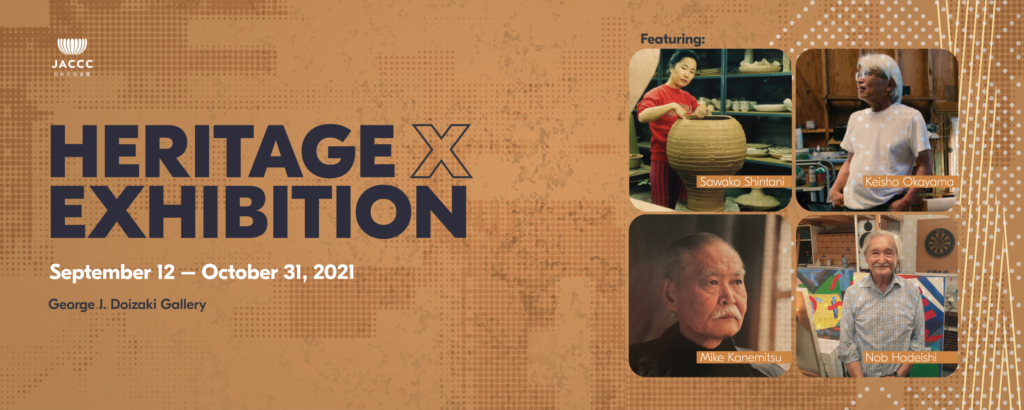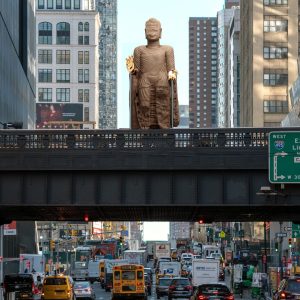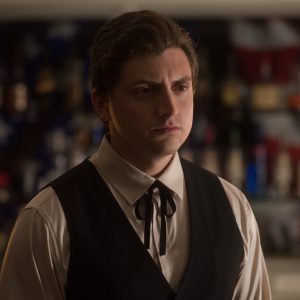Currently on view at the Japanese American Cultural & Community Center (JACCC) in Los Angeles is the Heritage X exhibition, featuring work by four influential Japanese American artists: Nob Hadeishi (Chouinard 71), Sawako Shintani (Chouinard 68), former Chouinard and CalArts faculty member Mike Kanemitsu, and Keisho Okayama.
The exhibition was curated by fellow Chouinardian Hirokazu Kosaka (Chouinard 70). Kosaka, Kanemitsu, Hadeishi, and Shintani all met at the Chouinard Art Institute, which later became CalArts.
Born in Japan, Hadeishi moved to the U.S. in 1947, after waiting years to be reunited with his parents, who lived in the U.S. and were placed in an internment camp during World War II. While still in high school, Hadeishi started taking classes at Chouinard, lying about his age to enroll. After serving in the Air Force between 1953-1958, he enrolled full-time at Chouinard where he met Kanemitsu and Shintani. Hadeishi’s work was influenced by both the New York and Los Angeles art scenes of the 1960s.
A sculptor and ceramics artist, Shintani received a BFA in sculpture at the Kyoto University of Fine Arts in 1962, and taught at the Kobe Women’s College (1964-66) before coming to the U.S. to study at Chouinard. The ceramics on display in the Heritage X exhibition are from her large collection at her home in Highland Park, and are representative of her unique, hand-built sculptural style.
The late Kanemitsu was known for developing a style that combined his training in Japanese sumi-e painting with modernist abstraction. Kanemitsu discovered modernist art while stationed in France during World War II. After the war, with the support of the GI Bill, he began his formal art education, studying with Karl Metzler in Baltimore, Fernand Léger in Paris, and Yasuo Kuniyoshi at the Art Students League of New York. His circle in New York included artists Jackson Pollock, Lee Kranser, Robert Motherwell, and Willem and Elain de Kooning. Kanemitsu moved to Los Angeles in 1961, where he discovered a love of printmaking. He went on to teach at Chouinard, CalArts, and Otis College of Art and Design.
The late Okayama immigrated to the U.S. from Japan with his family in 1936. During World War II, they were forcibly evacuated to an internment camp, which had lasting psychological effects on Okayama. Art became one of the ways he dealt with the emotional stress of his experience. He received a BA in Art from UCLA in 1962, and went on to teach for many years. Okayama was a prolific painter, producing work in pencil, sumi, watercolor, charcoal, oil pastel, and acrylic paint. Consistent across all of his work was a strong sense of color and space, which in later years was distilled and concentrated, “creating a kind of mystical light,” according to his bio.
The Heritage X exhibition opened earlier this month and will be open for in-person viewing through Oct. 31, 2021. No reservations are necessary.



